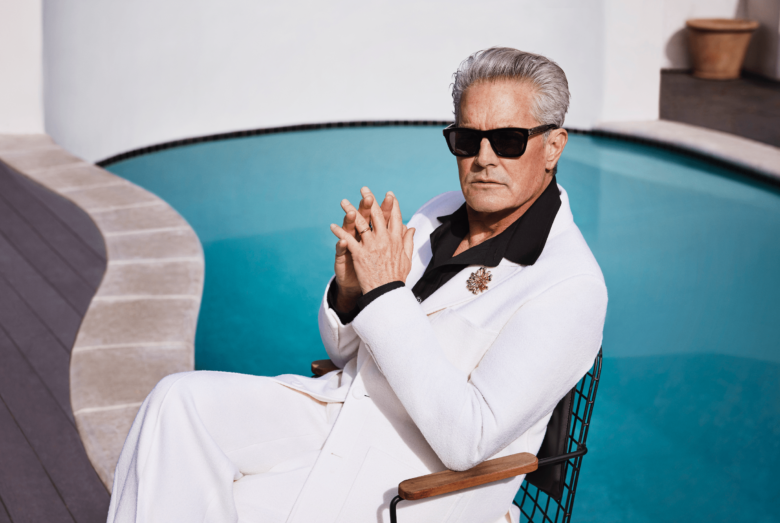The LGBTQI+ community needs queer-friendly hairdressers
Like it or not, hair can define us. There’s the bad hair days that can completely dampen our mood; the radical post-breakup haircuts that we hope will take away all our pain and resentment; and then there are the receding hairlines and stray greys that provoke quarter and mid-life crises out of nowhere. Specifically for LGBTQI+ people however, hair can be an important asset in gender expression and in navigating their queer identity.
Despite the particular importance that hair can hold for queer people, the experience of getting a haircut can be far from affirming. These highly gender-coded spaces might not always make queer people feel welcome and can be the site of micro-aggressions, erasure and rejection. In a traditional salon, your hairdresser might not think twice about assuming your sexual orientation or gender, whilst trans, non-binary and/or gender-non-conforming people might experience uncomfortable scrutiny.
This is something that Cara English, the Public Engagement Lead at Gendered Intelligence, a charity looking to improve awareness of gender diversity, confirms. “Salons and barbers can be highly gendered spaces, as well as beautiful and much-needed community and social hubs for people who feel comfortable in them,” Cara says. “But for those people outside of the binary, or many trans people in general, going for a simple trim can be a stressful situation.”
According to her research at Gendered Intelligence, salons and barbers can be exceedingly difficult for queer people to navigate. “The fear of rejection, exclusion or outright hostility shouldn’t be minimised: we’ve been told of many trans people being given an emphatic ‘no!’ when trying to go for a cut.” She puts this down to residual queerphobia and transphobia within the industry, an issue which can be experienced by queer people on multiple levels. “LGBT-antagonism still runs rife in many quarters, even in an industry traditionally imagined as more inclusive. This can be explicit or in other more gaslighting ways, like being shooed at that what you want is ‘too feminine’ or ‘too masculine.’”
Perhaps as a response to the difficult tension existing between the importance that hair can hold for queer people and the hostile environment that sometimes dominates in hair salons and barbers, hairdressers with an explicitly queer focus have emerged in recent years. In London alone, there are the explicitly gender neutral barbers Barberette and Barber Streisand, LGBTQI+ focussed Open Barbers and more and more traditional salons updating their ethos to cater to queer people. But how do these spaces differ from more traditional hair-styling services? And how can a hair salon begin to put a more queer-friendly approach into action?
Greygory Vass, one of the founders of Open Barbers, explains that queer-focussed barbers and salons are simply about listening to what customers really want, rather than subscribing to any kind of gendered assumptions. “Queerness is often about identifying your own desires on your own terms, and as such entering traditional styling spaces isn’t always compatible with that,” Greygory says. “When you’re surrounded by an environment where it’s assumed at every level that people seek binary and normative gender presentations, there isn’t usually the space.”
This is something that Greygory has had first-hand experience of, and one of the motivating factors for his decision to pursue Open Barbers as a business. “Open Barbers was founded on my personal experience of being excluded from barbers and not being adequately catered for in hair salons,” he explains. “I’m a transgender person and all my life was looking for short, masculine haircuts but from childhood onwards this proved too difficult to acquire due to attitudes in barbers and salons.” Learning to look after his own hair would ultimately develop a skill which he has now turned into a passion. “I decided to cut my own hair as a student, which led me to change careers and become a hairdresser later in life, so I could provide a space for anyone to get the hair service they are looking for, regardless of their identity.”
There are distinct parallels between Greygory’s experience and that of Erik Pascarelli, a hair stylist at BLEACH London, a salon with a queer-friendly ethos. “I originally got into hair because every salon I went to gave me a ‘feminine’ short haircut, or would straight up refuse to cut my hair the way I wanted,” Pascarelli recalls. “When I was 11 years old and freshly out as trans, I had to start cutting my own hair to get anything close to what I wanted.”
Speaking about what hair stylists can do to become more accessible for queer people, he has a simple suggestion that will make LGBTQI+ people’s experiences much easier. “All allergy test forms or new client forms should have a pronoun option,” he says. “That’s what we do at the salon I work in, BLEACH, and it immediately eradicates any discomfort. No one needs to be paranoid about being misgendered by their hairdresser.” However, certain issues within hairdressing are more deeply ingrained and need to be tackled at their root. “Barber shops should be less about having a good ‘mens’ (whatever that means) haircut and more about having a good haircut. Full stop,” Erik explains. “The issue is that hairdressing and barbering are taught in very binary ways, so people training don’t often even get the chance to learn their craft in a more fluid, less labelled way.”
Yet as Cara, Gregory and Erik have all emphasised, a first step to make hairdressing more inclusive would be for hair stylists to really listen to the person in front of them and throw their gendered assumptions out the window. Once they do so, they can become attunded to the myriad ways that queer people might approach their gender presentation and expression. This is something that informs Greygory’s approach at Open Barbers, and which he thinks is one of the fundamentally unique things about the service he offers. “Some people want us to support them in making their hair ‘more queer’ as this is a part of their identity they wish to emphasise, whilst others ask for hair that makes them blend in as much as possible because unwanted attention is unsafe for them,” Greygory says.
We can’t get away from the fact that hair is also tied up in how we’re viewed by the wider world, making it intrinsically political and, at times, a matter of safety. For the security and comfort of trans, queer and non-binary people – particularly those that don’t have access to services like Open Barbers – it’s vital that hairdressers and barbers begin to make their businesses a more queer-friendly space. Taking a little extra care to make someone feel at home and to understand their needs can make a world of difference to them.
You can find more information about Open Barbers here and Bleach London here. You can also follow Erik on his Instagram. Further information about Gendered Intelligence can be found here.

